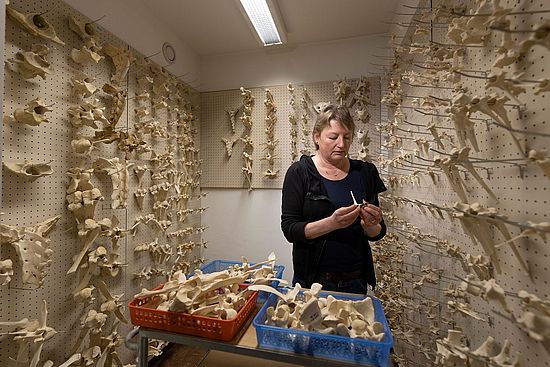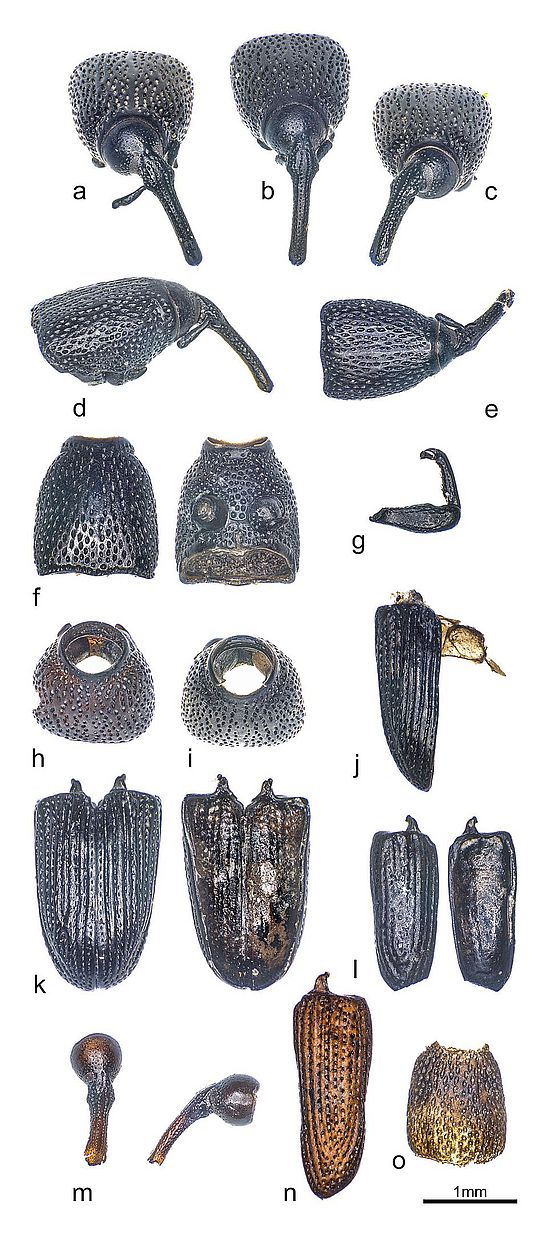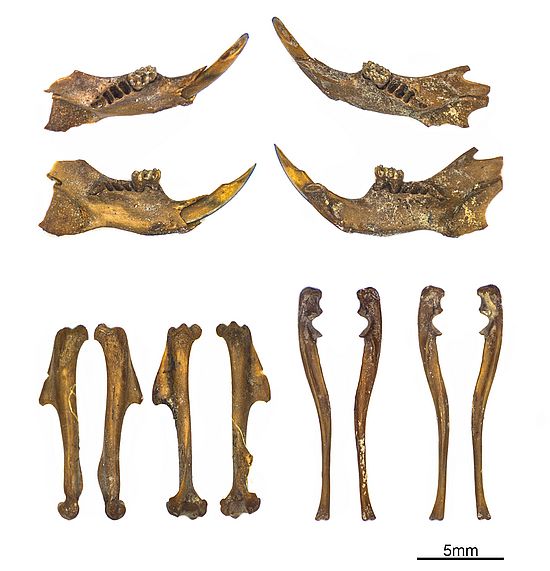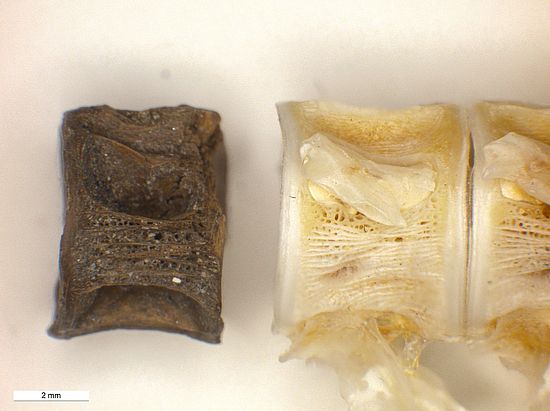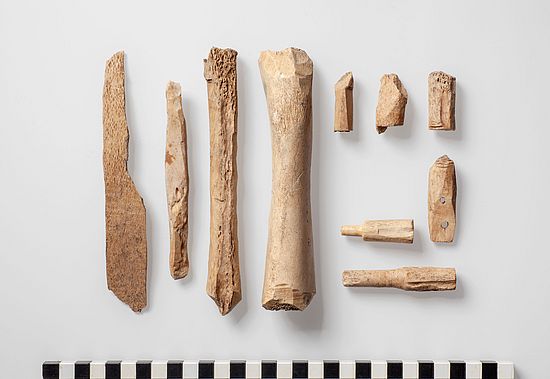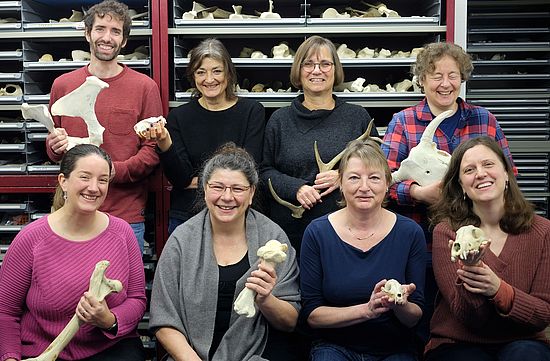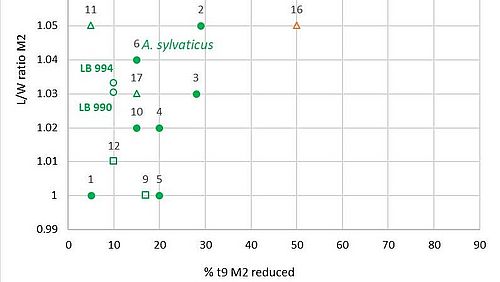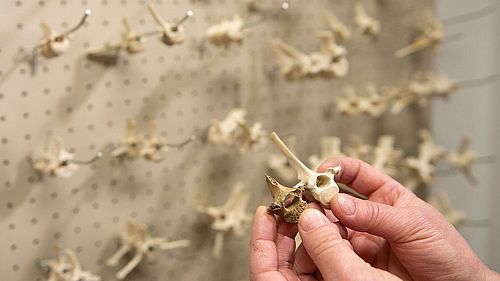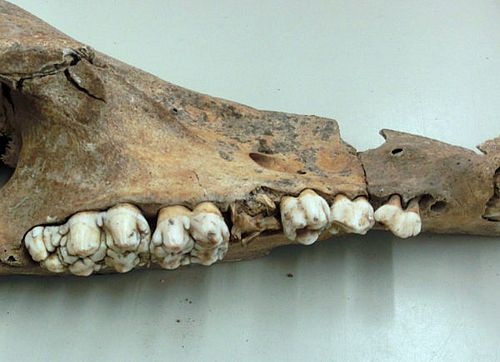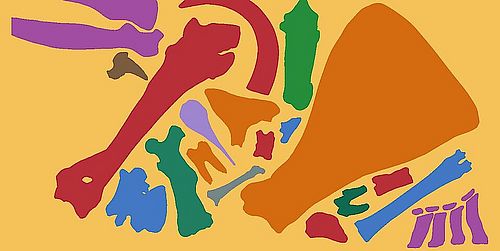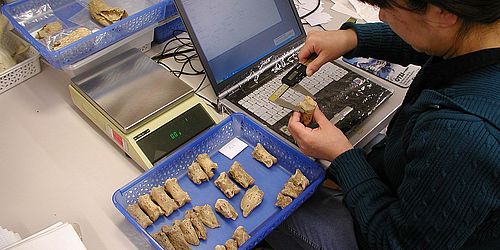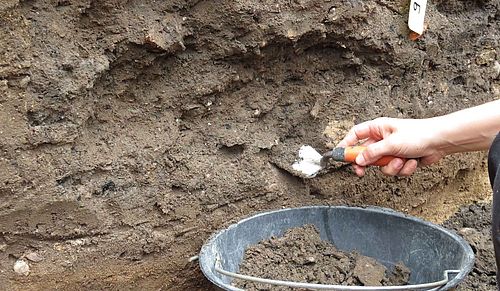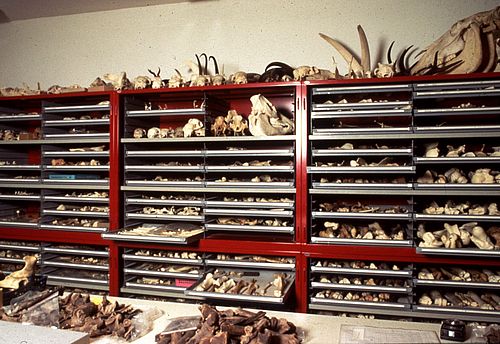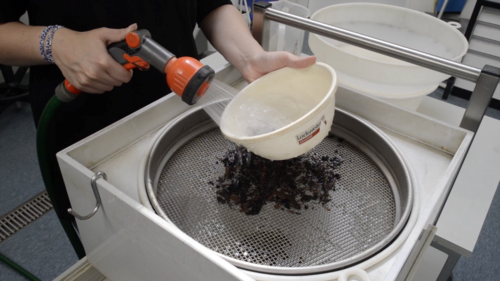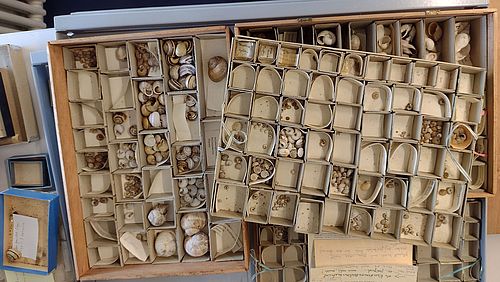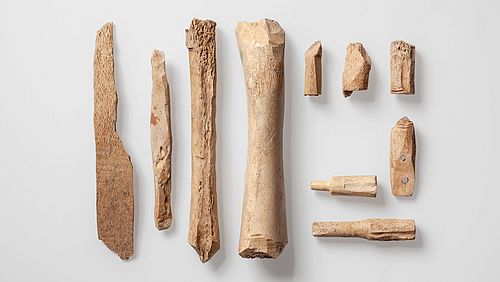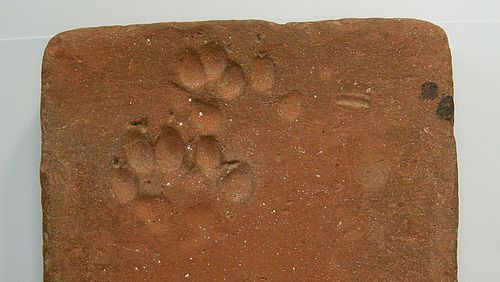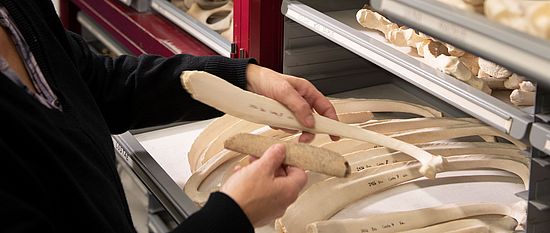
Archaeozoology
Working Group Archaeozoology Prof. Dr. Sabine Deschler-Erb
Archaeozoology primarily examines zoological remains from an archaeological context. It works with natural science and humanities methods and also takes into account any written and iconographic sources. This results in a wide range of statements and findings, for example on the history of the environment and fauna, domestic animal domestication, animal husbandry and hunting, economics, crafts, nutrition and health of humans and animals as well as social and religious history.
Archaeozoology is an integral part of the PNA studies at the University of Basel. Students are introduced to the subject area in theory and practice and learn to classify archaeozoological results in terms of cultural history.
Cyclical courses:
BA level:
- Lecture: Introduction to Archaeozoology
- Practical course: Determinations on mammal, bird and fish bones
- Internship: Archaeobiological and geoarchaeological field course
- Lecture: Vegetation and faunal history
- Participation in the lecture "Introduction PNA", in the proseminar and seminar PNA as well as in the practical course Typology, Technology and Raw Materials I
MA level:
- Internship: identification, data collection, evaluation and interpretation of archaeological animal bone finds
- Lecture with practical courses: Bone and antler artifacts (in collaboration with Prehistoric Archaeology
- Lecture with internship: Small animal remains (small mammals, birds, fish) from archaeological sludge samples
- Lecture: History of Domestication
- Introduction to the study of burnt bones (in collaboration with Anthropology)
- Participation in the seminar PNA
The Archaeozoology working group examines animal materials from all epochs from the Palaeolithic to modern times with a focal area on Holocene finds. These come from archaeological excavations in Switzerland and neighboring countries (Germany, Austria, France, Italy), but also from North Africa and the Middle East.
The focal areas are large and small animal remains as well as bone artifacts from:
- Neolithic and Bronze Age lakeside settlements
- Late Iron Age, Roman and medieval settlements
- Prehistoric and Roman cremation graves
- Cultic context





Contact Archaeozoology
Staff
Associates and alumni staff
| Name | Position | |
|---|---|---|
| Dr. Idoia Grau-Sologestoa | Guest researcher | |
| Prof. Dr. Jörg Schibler | Emeritus Professor | |
| Dr. Heidemarie Hüster Plogmann | alumni academic co-worker |

Other projects outside the database
The Archaeozoology working group is mandated by many years of experience in the investigation and analysis of animal remains from a wide range of eras. It collaborates in various projects in an interdisciplinary environment and with various research partners and institutions.
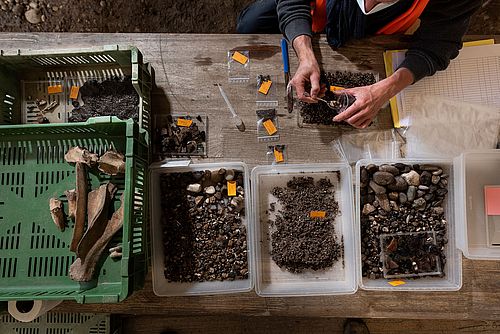
Excavation
- Reviews of features with archaeozoological material
- Counseling for the removal of animal bones, archaeobiological samples, block recoveries of whole animal skeletons, etc.
- Preparation of archaeobiological samples and extraction of animal remains (on site or at the IPNA, in collaboration with the archaeobotany department)
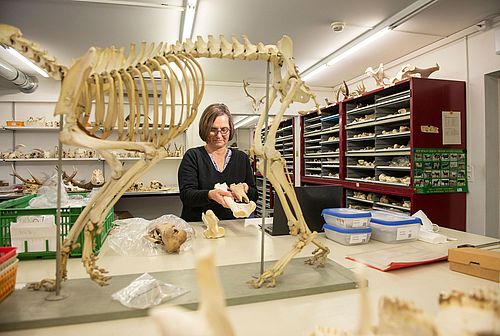
Work in the reference collection
The investigations are primarily carried out using morphological and metric methods. For further questions, chemical investigations are also carried out in close collaboration with the Archaeogenetics and Isotopy working groups.
- Morphological examination and species identification of large animal fauna
- Morphological analysis of microvertebrates, molluscs and insects from archaeobiological soil samples
- Individual age and sex determination
- Metric studies, size and growth form calculations
- Investigations of taphonomic traces (butchery traces, processing traces, burn marks, etc.)
- Investigation of pathologies
- Studies on seasonality
- Raw material determination of artifacts from animal hard tissues
- Examination of burnt bones, in particular from cremation graves (in collaboration with anthropology)
- Recording of animal remains with the osteological database software OSSOBOOK [1]
A series of instructions on archaeozoological methodology can be found here.
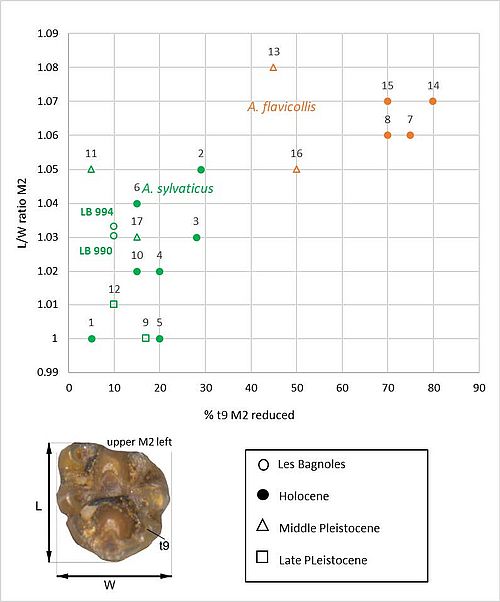
Evaluation work
- Statistical analysis of the collected data
- Creation of tables and graphics
- Writing academic reports and publications
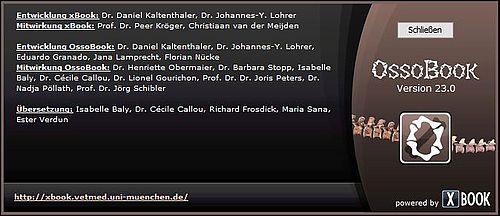
[1] OssoBook is a free database software specially developed for storing and processing data with archaeozoological content:
https://www.archaeobiocenter.uni-muenchen.de/forschung/datenbank/index.html
Quick Links
Social Media

